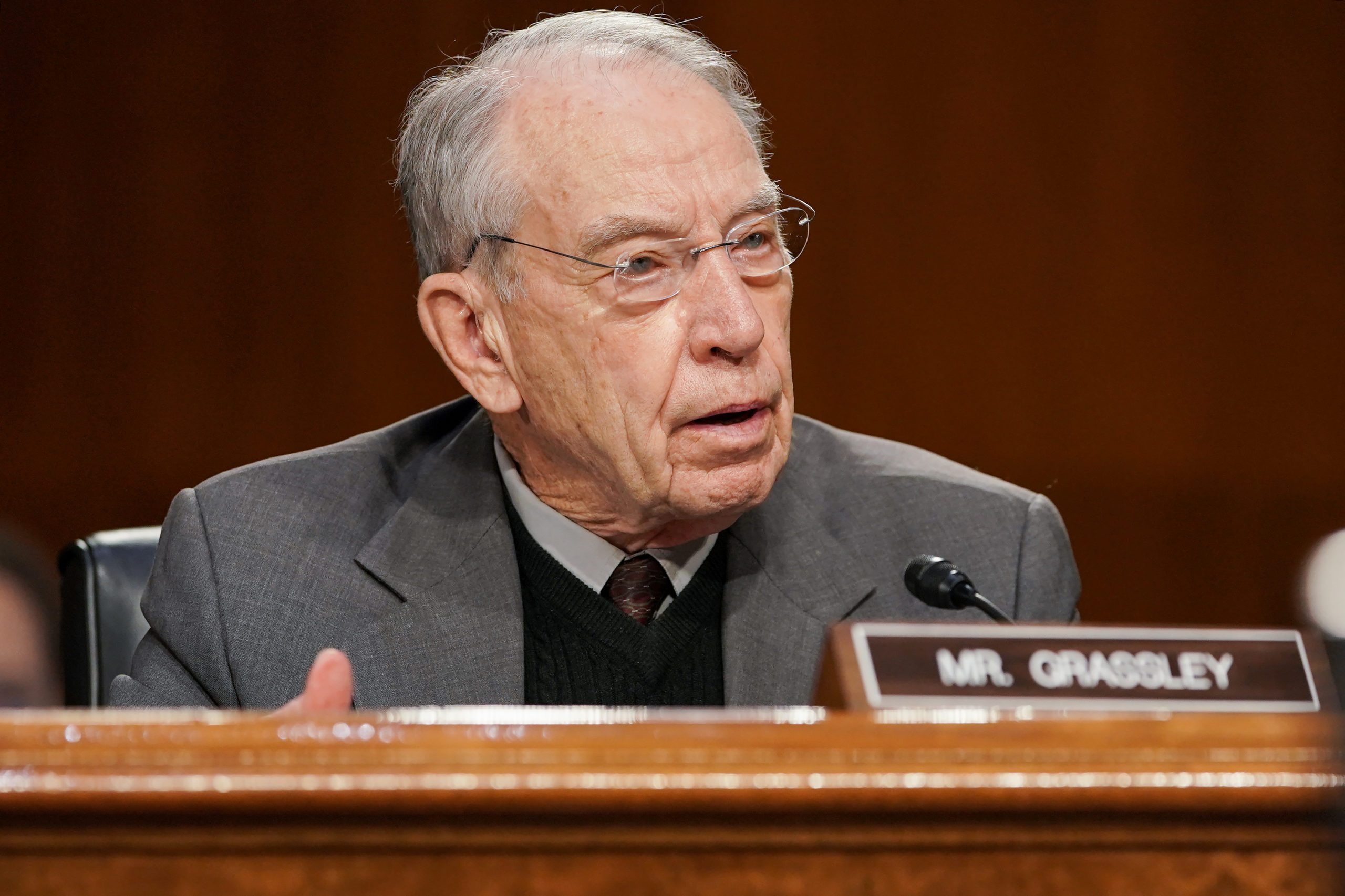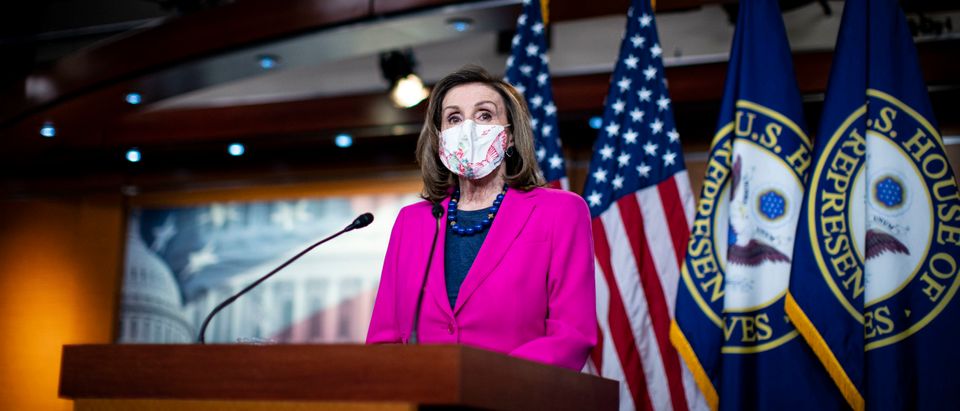The $1.9 trillion coronavirus relief package includes money for a plethora of interests you might expect, such as funding for healthcare, roughly $350 billion for states and stimulus payments. But some Democrats are also angling for taxpayer-funded relief money to bail out pension funds that have ballooned over the years while many of the companies in question continued to pay their top-ranking employees millions of dollars.
The Pension Benefit Guaranty Corporation (PBGC) protects pensions of private-sector employees. PBGC says their financing comes from the insurance premiums that employers pay, along from investments, assets of pension plans that they preside as trustee over, but not from taxes. While pensions took a hit during the pandemic due to falling interest rates, corporations underfunded their pensions long before the pandemic. And now, taxpayers might pick up the cost.
After a failed attempt to bail out pension plans in 2019, Democrats are itching to include a multi-employer provision in the coronavirus relief package which would effectively be a taxpayer slush fund to corporations and union leaders who have underfunded pensions.
Illinois, for instance, requested $10 billion in federal aid to bail out its pension system, citing the coronavirus pandemic despite the system having been neglected for years, according to The New York Times (NYT). The state offers a pension program with 3% annual benefit increases, but most of the state’s pensions — which include five state-run pensions and hundreds of municipal-run pensions — are deeply underfunded, according to the report. Local governments have been forced to raise taxes to cover their debts, according to the NYT. And Illinois isn’t alone in needing pension bailouts.
Democrats proposed the Butch Lewis Act in 2019 that would create a fund to make “loans to certain multi-employer defined benefit pension plans” through the Treasury Department. The Congressional Budget Office (CBO) estimated that taxpayers would be responsible for roughly $70 billion over 10 years. The plan included no reforms to the system that would prevent a similar crisis in the future and was opposed on these grounds by Republicans at the time, according to Roll Call.
Republican Iowa Sen. Chuck Grassley and Republican Tennessee Sen. Lamar Alexander released their own pension program in both 2019 in response to the one proposed by Democrats and again in December 2020 that – unlike the Democrats’ proposal, which expanded the pool of eligibility and which allows any plan that is failing through 2024 to be eligible for the bailout – only allows the most dire plans to be eligible and has an eligibility cutoff of the date of enactment.
“This is a balanced proposal to help protect the benefits promised to about 1.5 million retirees by private sector employers and unions,” Alexander said in a statement. “Our legislation would shore up PBGC’s role as an insurance company with a limited infusion of taxpayer dollars instead of an open-ended bailout, and institute structural reforms so this does not happen again.”
Amid the pandemic, the pension bailouts have returned.
The Emergency Pension Plan Relief Act (EPPRA), introduced by Democratic Virginia Rep. and House Education and Labor Chairman Bobby Scott, would allow the PBGC to take over the liabilities of the corporations that it covers until those corporations become stable enough to pay for their own pensions. The EPPRA guarantees that no pensions will be cut.
Under the Employee Retirement Income Security Act (ERISA), the PBGC can “partition” failing multi-employer pension plans, according to the EPPRA. But under the EPPRA, a “special partition relief program” would be created where PBGC could cover all pension payouts. The program would be funded through the Treasury Department, according to the EPPRA. The Treasury Department is taxpayer-funded. (RELATED: ‘Chock Full Of Spending Porn’: Sen. Kennedy Blasts ‘Left Of Lenin, Neo-Socialist’ COVID-19 Stimulus Bill)

WASHINGTON, DC – FEB. 24: Sen. Chuck Grassley (R-IA) questions Xavier Becerra, nominee for Secretary of Health and Human Services, about abortion during his confirmation hearing before the Senate Finance Committee on Capitol Hill on Feb. 24, 2021 in Washington, DC.(Greg Nash-Pool/Getty Images)
Both of the Grassley-Alexander proposals from 2019 would force stakeholder contributions and reform funding and liability measurement rules. Multi-employer plans can estimate their liabilities at a greater discretion than single-employer plans. The Grassley-Alexander proposal proposed to change how they can measure their liabilities.
The latest bid to earmark COVID-19 relief for these same pension plans offers no such reform plan.
There are currently approximately 1,400 multi-employer pension plans that cover roughly 10 million active and retired workers, according to the American Action Forum. Underfunding has forced the systems to rely on the PBGC as backup, according to the report. However, the CBO estimates that by 2027 the PBGC fund that covers pensioners’ benefits will run out.
While pension funds run dry as companies hedge their bets on the so-called bailout, massive corporations still pay out big bucks to their CEOs and other top-ranking employees.
One such high-dollar company that would likely be eligible for a pension bailout is General Electric (GE). GE recorded a $95 billion pension obligation in its financial statements, according to Barrons. That amount reflects the present value of all future payments promised to retirees, according to Barrons. Despite growing financial obligations, Chairman & CEO Larry Culp made nearly $24 million in 2019 compared to just $15 million in 2018, while SVP & Chief Human Resources Officer Kevin Cox raked in nearly $13.5 million, according to salary.com.
Despite having billions in pension obligations due, GE executives didn’t feel any repercussions, with Culp even making more in 2019 than he did in 2018. GE even made the decision to freeze pension plans for roughly 20,000 employees in 2019, according to Investor’s Business Daily.


